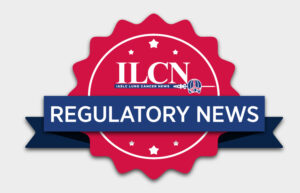
The phase 2a clinical trial of CAN-2409 was based on preclinical trial results, which demonstrated that local and systemic immune activation was associated with encouraging overall survival (OS) after two intra-tumoral injections of CAN-2409 plus prodrug (valacyclovir) in patients with unresectable, stage III/IV non-small cell lung cancer (NSCLC) who had an inadequate response to ICIs.
Following extended follow-up, CAN-2409 appears to be well-tolerated with manageable treatment-related adverse events (TRAEs). Charu Aggarwal, MD, MPH, presented the final OS and safety data from the trial during the 2025 World Conference on Lung Cancer.
CAN-2409 is a gene-mediated cytotoxic immunotherapy. It uses a modified adenovirus to locally administer a replication-deficient HSV-tk enzyme. When administered with valacyclovir, it releases cytotoxic metabolites and acts as a viral immunotherapeutic agent.

Longer Follow Up and New IO Combinations
Registered WCLC 2025 attendees can still watch Dr. Charu Aggarwal, MD, MPH, and other presenters share key insights with on-demand access to the session. Watch Now
This leads to the localized cytolytic release of immune particles, which can induce local immunity and subsequently activate immune responses in CD8+ T cells, resulting in T cell-mediated responses against injected metastases.
Trial Design and Patient Population
The trial assessed the combination of CAN-2409 plus valacyclovir in two cohorts of patients with stage III and IV non-resectable NSCLC who had inadequate response to ICI:
- Cohort 1: stable disease after >18 weeks of ICI
- Cohort 2: progressive disease following >18 weeks of ICI
Both cohorts were administered two courses of CAN-2409 and valacyclovir via injection, along with continued standard-of-care (SOC) treatment (anti-PD-1/PD-L1 therapy ± chemotherapy).
Injections were administered 5 to 7 weeks apart via bronchoscopy or percutaneous injections, followed by oral valacyclovir for 15 days. Patients were considered evaluable if they received two courses of CAN-2409 and had a 12-week CT scan assessment; more than half of the enrolled patients (46 of 76) were defined as evaluable.
The median patient age was 67 years and 69 years across the arms, and baseline factors were well-balanced between the enrolled and evaluable cohorts.
Key Results
CAN-2409 generally demonstrated a favorable safety and tolerability profile, which was consistent throughout the extended follow-up.
“Grade 3 treatment-related adverse events were observed in less than 5% of patients,” Dr. Aggarwal said. “The treatment-related adverse events were consistent with the mechanism of action, such as chills and pyrexia. However, no grade 4 or 5 events were noted.”
The median OS data in the cohort with progressive disease were notable compared with SOC chemotherapy. At a median follow-up of 32.4 months, median OS was 21.5 months in 41 patients with progressive disease.
In the non-squamous NSCLC subgroup, median OS was more than 2 years (25.4 months), with a median follow-up of 41.2 months. The data also show a durable survival, with 37% of patients alive for 2 years or more post-treatment.
“Historically, these patients have a median OS of about 9 to 12 months with SOC docetaxel chemotherapy,” Dr. Aggarwal said.
Abscopal responses with shrinkage were observed in 69% of patients with uninjected lesions, suggesting that limited injections can prime systemic, durable anti-tumor immunity.
“Abscopal response is a rare phenomenon in oncology. However, with this technology, we did see abscopal response—a decrease in uninjected lesions—measured in all evaluable (n = 35) patients with at least one uninjected lesion,” Dr. Aggarwal said. “We also saw a variable immune response in patients with non-squamous histology.”
Patients with non-squamous histology demonstrated improved survival compared with those with squamous histology (25.4 months vs. 13.3 months).
“We saw a variable immune response in patients with non-squamous histology,” Dr. Aggarwal said. “This volcano plot on the right will demonstrate that patients with non-squamous histology exhibited a higher immune activation profile, with higher proportions of activated CD8, CD4, and memory B cells.”
Future Implications
The combination of this favorable safety profile, durable OS findings, and abscopal responses in patients with progressive disease shows promising efficacy for patients with NSCLC. Further, it may pave the way for new therapeutic options for patients who have had inadequate responses to ICIs.
“These findings support the development of a phase III randomized clinical trial in non-squamous NSCLC against SOC chemotherapy,” Dr. Aggarwal said.










